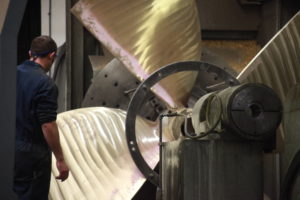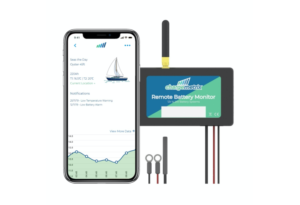Traditional tailoring method of boat building no longer worth the time

“The boat manufacturing sector is under huge pressure, not necessarily to build more boats but to build them more efficiently, thereby offering better value or perhaps, more importantly, better margins so the industry can re-invest in its staff and equipment,” writes David Lewin for Global Marine Business Advisors as he argues that the industry needs to look to the automotive sector for inspiration.
According to David, too many boats are still being built by traditional ‘tailoring’ methods.
“There is still a huge amount of effort (quite rightly) put into creating a strong hull with a fair gelcoat but often with less regard to the inside of the hull and fixing such major items as the bulkheads in the right place – every time,” he says.
“Bulkheads are too often cut with ‘green’ around the edges so they can be scribed in and everything else is then fitted to them. This means the boat can only be built in a linear way; one section of the build after another – hull, bulkheads and bearers, engineering, floors furniture, deck, deckhead cladding, etc. As these tasks mostly require different skills and lead times, the non-productive downtime is where all the costs mount up.
“I’ve seen plenty of boat costings with every nut, bolt and piece of equipment on the Bill of Materials, and even a fair stab at an accurate labour cost, but never a realistic quantification of the downtime.
“The ‘holy grail’ must be to have the design – all of it – right before commencing to manufacture; to have thought through all the little niggles like where the side cladding meets the deckhead or whether there is enough depth and width in the bow to create a proper bed etc.
“If all these parameters can be fulfilled then the boat can be built ‘concurrently’ – while the hull is being moulded, the engineering can be planned, ordered and such things as the electrical loom manufactured. At the same time, the furniture can be committed to the woodshop or outsourced, any rigging made up, and the soft furnishings planned and put into production.”
David is keen to stress the point that there is no substitute for design time on the computer and building a complete virtual model of the boat. The time cost may look outrageous to some but there are no materials being wrongly or wastefully cut, no time spent chamfering or shimming pieces into place and no downtime waiting for parts to arrive or be manufactured. And the boat will finally be assembled in much less time.
“Many companies in many countries have accepted this now,” David continues, “but it still worries me that many smaller companies in the UK, whilst using some form of CAD, do not take it through to finish the job, usually because they are not sure exactly what they want and will decide when it’s in situ.
“That’s no different to a potential owner asking for a change of specification during the boat build for which you would charge lots of money – only this time it’s costing lots of money in yet more downtime whilst decisions and lead times are considered.

“It’s the smaller companies that in the main don’t have the resources to push through a difficult build and would therefore benefit most by working towards a complete design package before committing to fibreglass, resin and wood. Take your time with the design and build the boat right first time – and on budget.”
David is part of the recently formed Global Marine Business Advisors, a group of worldwide marine industry professionals who have come together to offer their knowledge and services separately, or collectively, to the world’s boating industry. Read his article in full.










